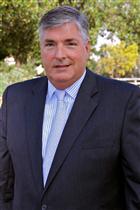
Greetings—
This past week, the foundation was privileged to distribute funds to local grantees for two of our competitive grant cycles – teen pregnancy prevention and aiding college bound youth in the communities of Dinuba, Reedley, Cutler-Orosi and Orange Grove. In a late afternoon event held at our new Center for Community, we once again were able to translate grant dollars into programs that transform people’s lives.
It remains one of the great privileges of being a community foundation, to provide that connection between a donor’s passion and the next generation
Grantmaking Connects FRF’s many stakeholders
For FRF, competitive grantmaking brings together key strands of our work:
• funds distributed from those entrusted by donors to our care, whether it be a bequest or regranting dollars from a trusted and valued foundation partner•local nonprofits seeking support for programs, missions and outreach
• volunteers working together to help us identify options and solutions, often to complex problems, through our advisory grants committees
• goals to fund and the grants themselves, approved by our board of directors to ensure clarity as to intent and priority, as well as ongoing oversight
• and foundation staff working to ensure the funds are properly used, with results measured, evaluated and then shared with multiple stakeholders
Effective philanthropy often takes time, discipline and follow up, and in both cases we are proud of the work distributed this week.
The Mitsuoka Legacy for Dinuba, Reedley and Orange Cove
Dorothy Mitsuoka worked hard as a citrus farmer, and believed in the power and importance of a college education to the children in her local community. Her bequest to the foundation set up a permanent endowment, whose grants support programs that would expand the number of local students ready and able to go to college.
$100,000 was distributed to four organizations – Central Valley Higher Education Consortium for a boot camp for first generation college bound students, Parent Institute for Quality Education (PIQE) engaging 185 parents to support the college readiness at two local high schools, Community Services Employment Training for a program that connects high school students in Cutler Orosi with a chance to develop leadership skills, to learn how to use technology and to build career and college preparation. The fourth grant to Teen Success was for supporting teen moms transition to being able to go to college.
Teen Pregnancy Prevention – a multi year partnership continues
Other grants distributed are part of multiyear support from the Hewlett Foundation to reduce rates of teen pregnancy, which locally - despite recent reductions in the national numbers - are among the highest in California. This year’s $303,000 in grants included support for the Madera Coalition for Community Justice, to provide comprehensive sex education to youth and parents, for ACT for Women & Girls, to support two programs that use teens as educators focused on reducing teen pregnancy, the Peer Health Ambassadors Program of Fresno Barrios Unidos, providing outreach and education to 3,000+ teens and 350 parents, and for the Boys & Girls Clubs of Fresno County, to expand its Safer Choices program to engage 990+ youth and 530 parents in workshops, again aimed at reducing teen pregnancy.
Program directors shared their appreciation for this support, noting this work is not universally welcomed but critical in making headway in reducing the alarming rates across our six county region. Whether it is investing in education and awareness, for both teens and their parents, the grantees believe that giving teens accurate information is an important ingredient to changing behaviors, and in expanding opportunities for success in the future.
In the same way, investing in the capacity, awareness and skills of teens exploring college becomes an effective tool for those exploring life after high school, especially for those students who are forging a pathway never followed before in their family. These programs help them imagine a future embedded in the dreams of parents, some of whom are navigating these choices for the first time, just like their children. Given the potential impact of going to college, getting ready early is often vital.
Effective investments transforms young lives
Whether partnering with donors or foundations, we know the effective investment of philanthropic dollars can not only sustain a legacy, a program or an education but provides for a future to be transformed, lives made promising through new opportunities, and a community’s next generation strengthened.
Congratulations to our grantees, and the thousands of teens that will be helped over the coming year. That is one measure of philanthropic capital well invested. Come join us in this intergenerational investment - good work indeed.

Comments